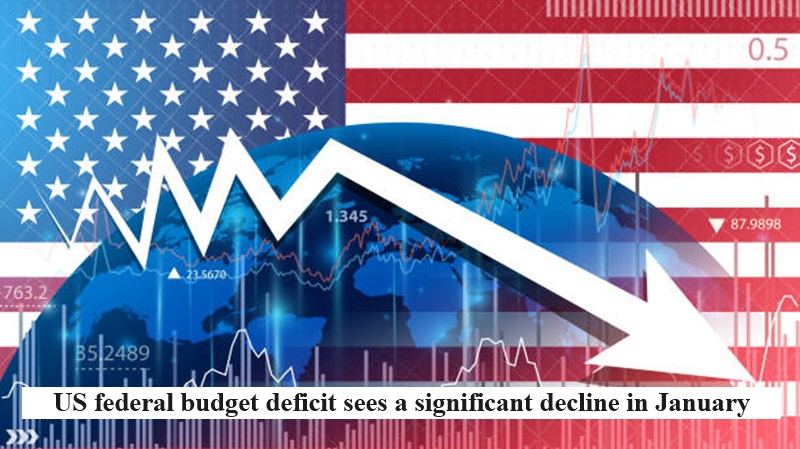
The US federal budget deficit experienced a notable decline in January, plummeting to $22 billion, as per data unveiled by the Treasury Department on Monday.
This substantial reduction was credited to record receipts for the month, partly spurred by a decrease in tax refunds following the Internal Revenue Service’s (IRS) resolution of a backlog of pandemic-delayed tax returns.
Treasury officials highlighted that the comparison between January of this year and the preceding year was significantly aided by the absence of a similar large one-time expenditure, such as the $36 billion bailout of a Teamsters union pension fund in January 2023.
However, despite this positive development, outlays for the month rose by 3 per cent to $499 billion, while receipts surged by 7 per cent to $477 billion.
Over the first four months of the fiscal year, the deficit expanded by $72 billion, reaching $532 billion, marking a 16 per cent increase. This escalation was attributed to escalating costs linked to servicing the national debt, as well as heightened outlays for programs like Social Security, Medicare, and military expenditures.
The Treasury Department disclosed that both receipts and outlays for the period reached record levels, with receipts climbing by $112 billion to $1.585 trillion, and outlays rising by $184 billion to $2.117 trillion.
It is noteworthy that individual tax refunds decreased by $15 billion compared to the previous January, indicative of the IRS’s enhanced processing capabilities for paper returns. Conversely, individual withheld receipts saw a $20 billion increase, driven by robust employment trends.
However, the Treasury’s interest costs on the public debt surged by $18 billion in January compared to the previous year, reaching 3.15 per cent, attributable to higher debt levels and an increased weighted average interest rate.
Year-to-date, debt interest costs rose by $96 billion, outpacing outlays for Medicare. Additionally, costs for Medicare and Social Security witnessed significant increases, driven by factors like higher payments for Medicare Advantage plans and cost-of-living adjustments for Social Security beneficiaries.

Post Your Comments